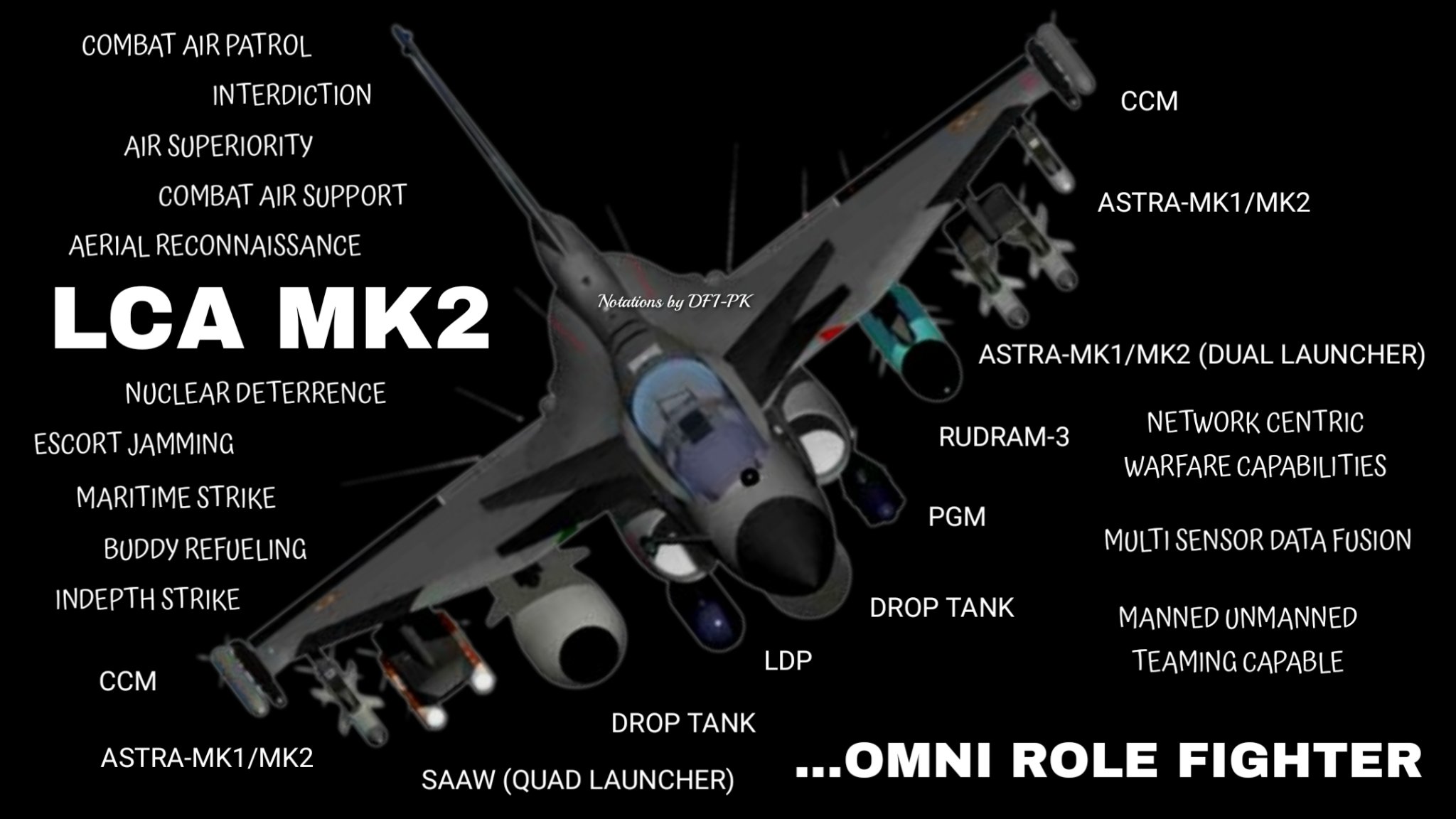SOURCE: RAUNAK KUNDE / NEWS BEAT / IDRW.ORG


The aerial landscape of the subcontinent is witnessing an escalation as Pakistan reportedly eyes an additional 14 Chengdu J-10CE “Vigorous Dragon” multi-role fighters. This move comes after India’s acquisition of the Rafale fighter jet, potentially aimed at achieving parity in the region.
While the Pakistan Air Force (PAF) has lauded the J-10CE as comparable to, and in some claims superior to, the Rafale, such assertions are met with skepticism. Indian defence experts argue that the forthcoming Tejas MkII will not only match but surpass the capabilities of the J-10CE and the F-16 Block-52, another mainstay of the PAF.
ADA officials speaking to idrw.org have said that the Tejas MkII fighter jet, set to enter production by 2028-29, offers a payload capacity of 6,500 kg (14,300 lb), which is slightly less than the J-10CE’s maximum load but still impressive. With an internal fuel capacity exceeding 3,400 kg (7,500 lb), the Tejas MkII can carry more weapons over longer ranges, enhancing its operational versatility. The added advantage of superior payload management ensures that the Tejas MkII can undertake extensive missions without compromising on its combat effectiveness.
In comparison, The Chengdu J-10CE boasts a maximum external load of 6,600 kg (14,541 lb) across 11 hardpoints, allowing it to carry a substantial payload of up to 5,600 kg (12,300 lb) comprising missiles, bombs, drop tanks, or avionics pods. This capability positions the J-10CE as a formidable multi-role fighter, capable of various mission profiles ranging from air superiority to ground attack.
The J-10CE is equipped with advanced avionics and radar systems, designed to provide robust combat capabilities. However, the Tejas MkII promises to feature an upgraded Uttam AESA radar system, which is expected to surpass the capabilities of the J-10CE’s radar. The Uttam AESA radar will offer superior tracking, targeting, and electronic warfare capabilities, enhancing the Tejas MkII’s situational awareness and combat readiness. This advanced radar system, coupled with the jet’s state-of-the-art avionics suite, positions the Tejas MkII as a formidable adversary in modern aerial combat.
A critical aspect of any fighter jet’s capability is its armament. The J-10CE is armed with an array of Chinese-made missiles, including the PL-15E and PL-12 air-to-air missiles, which are considered effective but have limitations in terms of range and targeting capabilities compared to some Western counterparts.
The Tejas MkII, on the other hand, is set to feature a diverse and advanced weapons payload, including the Astra MkII and MkIII missiles, along with the ASRAAM (Advanced Short Range Air-to-Air Missile). These missiles are expected to offer superior range, accuracy, and reliability compared to the PL-15E and PL-12. The Astra MkII and MkIII, in particular, will enhance the IAF’s beyond-visual-range (BVR) combat capabilities, giving the Tejas MkII a significant edge in aerial engagements.
The Tejas MkII’s projected entry into production by 2028-29 positions it as a formidable replacement for India’s ageing MiG-29UPG, Mirage-2000-5, and Jaguar fleets, which currently match the capabilities of the J-10CE and F-16 Block-52.
The Tejas MkII’s ability to carry more fuel internally allows it to operate over greater distances without the need for external fuel tanks, thereby freeing up hard points for additional weapons or equipment. This extended range is particularly advantageous for missions requiring long endurance or deep penetration into enemy territory, enhancing the IAF’s strategic reach.
The Tejas MkII is designed with future-proofing in mind, incorporating advanced technologies that will remain relevant for years to come. Its modular design allows for easy upgrades and integration of new technologies as they become available. This ensures that the Tejas MkII will remain at the cutting edge of combat aviation technology well into the future, providing the IAF with a platform that can adapt to evolving threats and mission requirements.
The induction of the Tejas MkII marks a significant stride for India’s indigenous defence production. While Pakistan’s J-10CE acquisition bolsters its air force, the Tejas MkII’s potential advancements in avionics, payload capacity, and weapon systems position it as a strong contender in the evolving regional airpower dynamics.
NOTE : Article cannot be reproduced without written permission of idrw.org in any form even for YouTube Videos to avoid Copy right strikes. Websites doing illegal reproductions will get DMCA and Legal Notices.